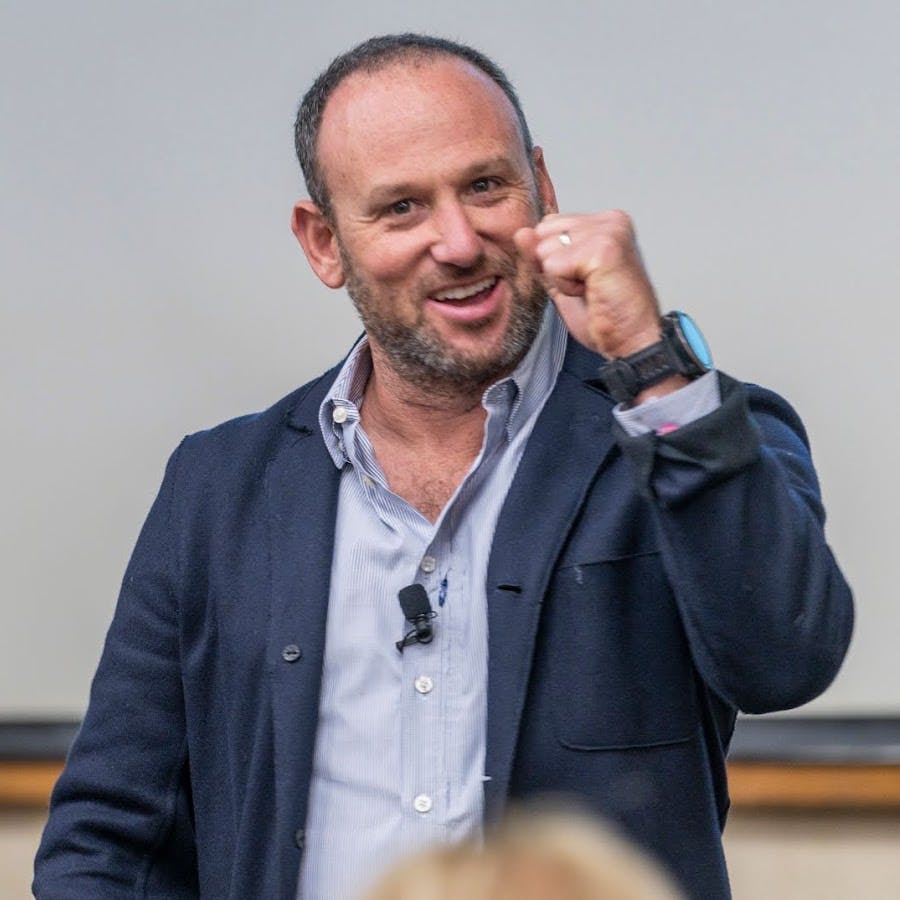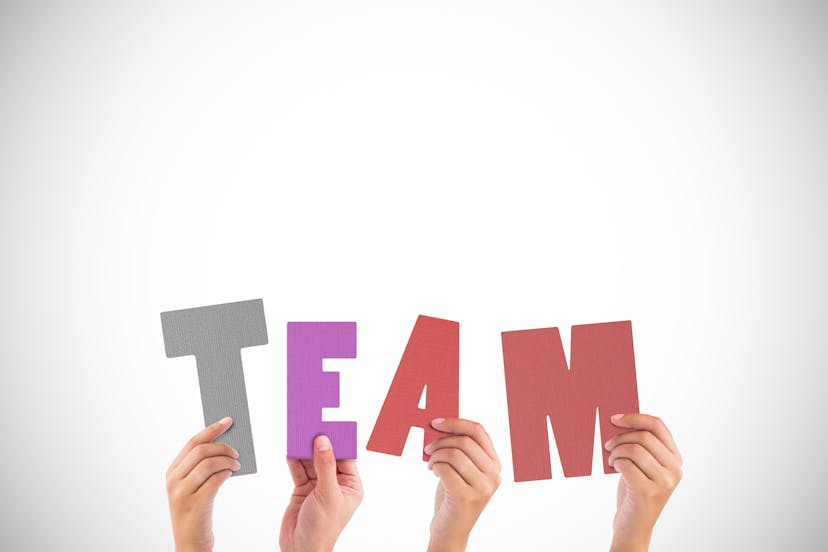Humans after all: Relationships are the synapses of culture
Published: 18th October 2021Josh Levine, father of “Great Mondays”, shares with us his tools and methods to design a meaningful work culture and explains why it’s especially important in the new context of remote/hybrid work.

This is an abridged transcript of our conversation – you can listen to the full interview in our podcast, otherwise, happy reading!
Josh Levine is on a mission to help organisations design a purposeful culture. He has developed an actionable framework in his book “Great Mondays: How to Design a Company Culture Employees Love” to help all companies have the tools to design and manage their own culture.
Chloe: Can you tell us a little about your background?
Josh: Yeah, absolutely. I actually started as a graphic designer and spent my formative years at a brand strategy agency. I became a brand strategist helping leaders define their story and tell it to the world, but what I realised is that the brand promise wasn't getting delivered on, and that was a missing piece of this. Eventually, I realised that we were talking about company culture. And so that's where I got started.
I created Great Mondays in 2007, with the idea of helping more people be happier at work, feeling more fulfilled.
“If you understand why you come into work [...] and believe in what you're doing, then any day of the week can be great, including Mondays.”

Chloe: I can relate, I also worked in a brand agency about 10 years ago, who started to include more and more culture work as they realised it was a must-have from a leadership perspective. But is it also well understood and welcomed by employees?
Josh: That's a good question. I think employees, whether they realise it or not – humans, not just employees! – humans appreciate when an organisation or community that they're part of has self awareness and can create an environment that enables the people that contribute to that community to be more productive and engaged. And you know, purposeful, I think.
And so, I think if you are a hard charging employee then you want to join a company that is going to deliver on that idea. If you're a creative employee then you want to join a group that values that. There's a lot of pieces to the idea of culture and all the things that get influenced by it. What we're finding now is that those people who are seen and valued and can contribute in a real, impactful way are more likely to stay at an organisation, or join in the first place. Clear cultures help companies and leaders acquire and retain talent.
“What we're finding now is that those people who are seen and valued and can contribute in a real, impactful way [...] are more likely to stay at an organisation or join in the first place.”
Chloe: That's super interesting – you have a culture, whether you know it or not, whether you want the culture to be like that or not. I guess that leads to the question, do you have examples of excellent and very bad cultures?
Josh: I don't believe that there are good cultures and bad cultures. If you're a hard charging kind of company, then you can attract those employees that are at that place in their career, they want to do that.
Amazon is a great example. They are tremendously commercially successful, beyond successful, right? And there are so many articles and so many stories about how they sacrifice their employee wellbeing for the customer. They're basically forcing people to work long hours, not to take breaks, and they are overstressed. I personally wouldn't join that company, that's not for me. But is that a bad culture? I don't know. As long as things are legal, which is a low bar, I guess that's fine.
For me, I think it depends on who you are, and what you're doing and what the goal of the organisation is. What kind of culture do you want? What kind of culture are you looking to achieve? Are you trying to be a more innovative organisation? Well, then you need to develop a culture that's going to allow and enable that to happen.There's just considering what it is you're trying to achieve, and what kind of people do you need to achieve that?
“I don't believe that there are good cultures and bad cultures.[...] There's just considering what it is you're trying to achieve, and what kind of people do you need to achieve that?”
Chloe: Part of my assumption is that leaders who come to you for help are all part of the “innovators” category. Is that correct? Or are there more types of leaders who actively want to shape their culture?
Josh: Well, in one sense, it has to be if you're doing this: this is a new tool for business! And so you have to have that innovative mindset. We're not just talking about innovative, new products, we're talking about a new process, a new way to engage with employees, and to be willing to spend the time, energy and money to invest in that. I think we're early days when it comes to integrating a culture into an organisation. So inherently, yes.
Chloe: This world of culture can mean a billion different things to different people. I noticed you have developed a very clear and actionable framework to help define, design and manage culture. Can you tell us more about it? What are the steps? What are the success metrics?
Josh: So let's start with the definition of culture. When you and I first connected, we were both reflecting on how there isn't necessarily one universally understood definition.
My definition is that culture is the cause and effect of every choice that you make, everything that you do inside of an organisation, big and small. When I discovered that idea, it was a revelation for me. The power of that statement is that it’s really just a system. It’s cause and effect. That's why it can be so powerful, or it can drive things downward. And that's what we have to consider.
“[Culture is] the cause and effect of every choice that you make, everything you do inside of an organisation, choices big and small.”
Beyond that, it's not very helpful. My journey led me to consider how you actually think about what are the levers for culture and so on. In my book, I share six components of culture. Those six components are a system that enables an organisation to get its head on straight and start to think about how to proactively design the organisation.
So the first three components are purpose, values and behaviours. Now these parts are essentially establishing where on the map we want to go, what we want to achieve.
- Purpose is your North Star. Or if you want to think about another metaphor, it's sort of the peak of the mountain where we're all headed.
So one example is Starbucks. ‘Inspiring humans, one cup, one smile, one neighbourhood at a time’. I'm misremembering it, but it's something to that effect. And what I like about that, whether you like Starbucks or not, is it's not about coffee, it's about the entirety of the organisation, like caffeine inspires one person at a time or one smile at a time. So that's about that human connection. And then finally, the one neighbourhood at a time, how are we going to make each neighbourhood better.
That's the North Star, that's what we're shooting for.
- Values are the guardrails. These are the priorities of the business, they are the ways that we behave, it's how we choose to do what we're doing. Values evolve. They are built into the DNA of the company. You can't have more than five values, or it's going to be very hard for people to remember, so it’s an exercise of prioritisation.
- Now, the third element is behaviours: the output of a culture.
That is the centre point. That is the reason why we're doing this. We define our values through behaviours. So the questions are: what are the behaviours we're shooting for? How do we establish those? How do we have people establish them for themselves?
Once you have those three elements, that sets your framework. Then you can just put them up on the wall and your company will start acting that way, right? Perfect.
Chloe: Ha ha, actually that was going to be my next question. How does one make sure that the designed culture resonates with people?
Josh: Even if you put it up on the wall, it doesn't mean that it's going to be used. If you think about one human trying to change a habit... think about hundreds of thousands! This is not an easy thing. So that's what allows us to get into the second three components.
So we did purpose, values, behaviours. Second three are recognition, rituals and cues. This is the activation, this is how you operationalise your platform, i.e. the first three components.
- Recognition: So most people are familiar with rewards and recognition programmes. Fantastic. The problem is, most people, most companies are rewarding the wrong thing. The problem is with most recognition and rewards programmes, they recognise the output. And it's the amount of widgets that you produce, the amount of bank accounts that you open, it's the amount of sales that you make…
The big example that I think is really compelling here in the United States was the Wells Fargo scandal from a few years ago, where someone high in the executive ranks said ‘we need to do more business to increase the quarterly profits’ or whatever it is. So bankers focus on opening more accounts, and getting new, more business. And the pressure was so intense that all of these bankers cheated. They basically opened unauthorised or completely fake accounts. Not only is it bad for PR if it gets out, but that's no long term business strategy. Right?
You need to reward people for values-driven behaviours. For example, “Chloe did this amazing thing related to cross silo collaboration”. Other people go, “oh, she's being rewarded. That's what success looks like, I should do that”. Now, this requires some strategy: why is cross silo collaboration really important for this organisation? It's because we need to get people working together or whatever the problem is. And that we had solved by identifying the values earlier.
- Rituals are the things that build the synapses of company culture: relationships. That is how behaviours get transmitted across an organisation.
If you're a startup, and you're growing over 50 people, that's when you start to see silos develop, that's when you start to see culture break down. Because outside of your little social group, you're not going to have the energy to want to proactively go and meet other people, you just have things to do. And so in larger organisations, you need to institute a pattern and a system of rituals that enable people to get to know each other, way before they need each other.
“You need to institute a pattern and a system of rituals that enable people to get to know each other, way before they need each other.”
If I know somebody, and they request something on a quick turnaround, I’m happy to do it for them, because I understand who they are. But if they're faceless, and it's just some random email, I can think ‘they can't tell me what to do!’.
A ritual could be a lunch and learn, it could be that we can go out as a team to play volleyball, or it could be Habitat for Humanity: we all get the day off and go build or volunteer. Any way you can mix it up, so you actually get to meet new people. That's how you scale company culture.
- Cues. Finally, we get to the end, which circles us back right back to the beginning. Every day is a busy day, we get lost in emails, and quarterly reports and delivering whatever we need to deliver and actually doing the work. So we forget what we're in and what we're doing this for.
Cues are physical, virtual, behavioural reminders of why we're here. So they're how we remind people that this is our purpose. These are our values. This is what we're aspiring to do. That connects us right back to purpose.
That essentially is the platform for the six components. It's not a quick fix, but it’s important if you really believe in bringing long-term value to the business. It's not easy, but it is powerful.
Chloe: It is powerful, thank you for taking us through the details of it. So talking about the fact that culture is not an event, but an ongoing activity, how can leaders make sure they keep up to date with what's happening and measure how employees are embracing the culture?
Josh: This is a really big question. There has been a movement to adopt the NPS (the net promoter score) internally, so it's the employee net promoter score. How likely are you to recommend working here to a friend or family member? I think that's a great little metric, you can add that to your annual survey, that measures generally how people feel about working there, but not specifically. So to me that's a lagging indicator. We need more leading indicators.
One of my clients has a system that any time someone calls out a colleague for doing something and adds the hashtag of one of the values, it gets broadcast to monitors around the office and across slack.
Employee engagement is a great byproduct of culture, and you just have to figure out how you measure that and what it means to be engaged – extra creative? Extra efficient? That’s up to you.
Chloe: Distributed teams is a whole new space that is now opened in front of us. In terms of culture, what did you witness with distributed teams?
Because we set meetings for specific tasks and we show up to get things done, there's not a lot of interstitial interaction. I think relationships within teams are weakening. You don't really get to have any in-person experiences, and often you don't have the time or the willingness to go out of habits and see how things are going over there. If someone's not on a zoom call, where are they? How do you meet someone new? How do you get to know someone better? That is the number one big thing for me because relationships are essential and they are affected.
When you have these executives saying everybody has to come back [into the office], I think it's because they're trying to recapture that you can't be innovative in a distributed way. I take issue with that. I think there's certainly ways to do it, you're just gonna have to change the way that people are building relationships, because it's not something that any company had to invest in before, it just happened. You had an office, which is where your typewriter was, right? That's where business happened.
Now, it happens everywhere.
And so what people are doing is like, ‘I don't like the way that looks, it doesn't work’. Well, we haven't developed that skill and the intelligence around that. And that, to me, is the biggest number one thing that's going to need to be addressed.
Chloe: You also talked about the fact that our current models rely on very old models, a typewriter, you know, at the office. Fun at work is something that can be frowned upon, because you're not directly producing, but what do you think?
Josh: So I think 15 years ago, you had the perks of signing up for a job at Google, right, or any workplace where you had the foosball table, or the ping pong, or whatever it is, right? The problem is that they would rely on that as the culture builder.
Those times that we're having fun together are the relationship builders. Those are going to be more and more critical, as we start to get further and further apart from having coffee together. So you're going to see remote-first organisations that have never been together. And I do think there's room for and there needs to be in person moments. There's nothing that really replaces that.
But when we're having fun, we're able to create more bonds with somebody else. And that's going to make the work even more successful, that cross silo collaboration, or the working together. You’ve established a connection at a different moment in time, at a different, you know, brainwave level, where it's like you are building trust, rapport and understanding, you understand where they're coming from. And that only serves to strengthen the work that you all do together. I think there will always be people that just want to be individual contributors. And that's fine. There's more opportunities for them than ever. But ultimately, the vast majority of work is going to be happening with people connecting and working together. And in order for that to do well, you're going to have to create connections and relationships. And doing that in other ways. And actually, having fun together is a really powerful, emotional way to get connected with somebody else.
Chloe: That couldn't resonate more with me. I find myself more creative, more engaged, more willing to put in more hours because I'm just really having a good time.
Josh: It's a stress relief, too, I think.
Chloe: Yes, absolutely. And even more than that, it also helps you, I remember a while back, one of the scrum-masters in my team actually used a LEGO set to help us stress test a situation that we could meet in the software. The analogy was building a city in a LEGO, and she had a set of requirements that allowed us to train the team before actually working on the software. And that was absolutely amazing. Through a simple game, we were able to spot communication problems, what we needed to be able to work properly. It was absolutely astonishing. It's, in my opinion, a false economy of time for leaders to think that you don't need these kind of things.
Josh: False economy of time. Yes. That's great. That sounds like a blog post and a podcast episode. Maybe a whole book. I love that idea.
Chloe: Amazing. Well, Josh, we are out of time. That was an absolute pleasure. Thank you so much. I've learned a ton.Culture is something quite simple in the end, don't listen to other people.
You have six main components: purpose, value, and behaviours, and then the actionable day-to-day stuff with recognition, ritual and cues for the employees to engage regularly with that culture and make it come alive.
Josh: Yes, exactly.
Chloe: Thank you so much, Josh. That was a pleasure, and see you next time.
Josh: Thanks, Chloe. Good to talk to you.
“If you want to build a ship, don't drum up people to collect wood and don't assign them tasks and work, but rather teach them to long for the endless immensity of the sea.”
Antoine de Saint-Exupery

Transcription by Beth Webster


